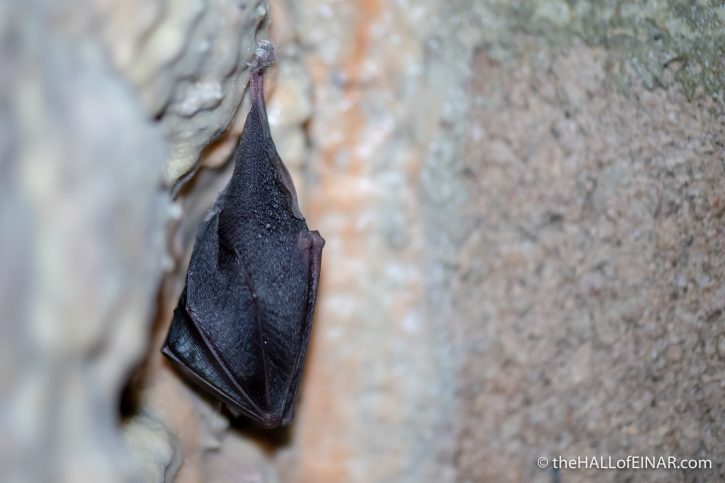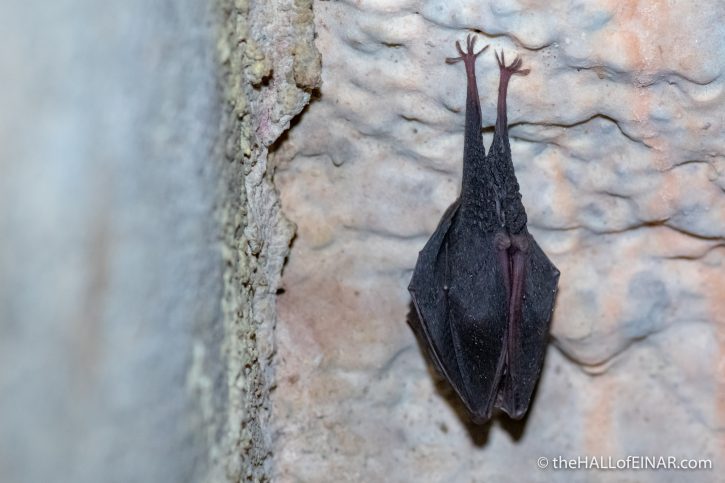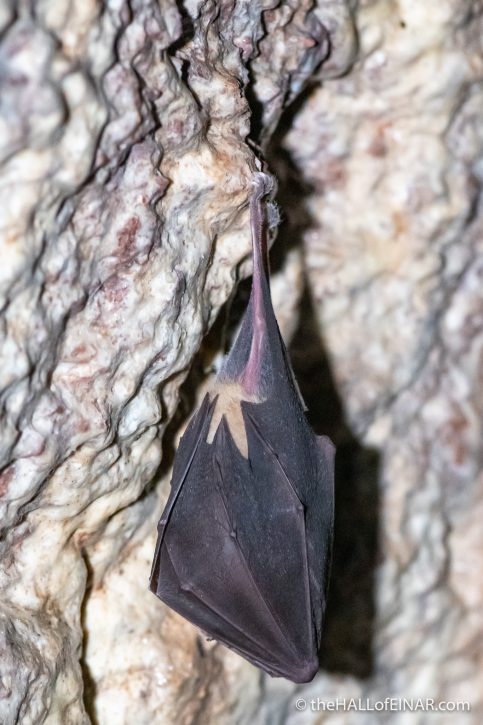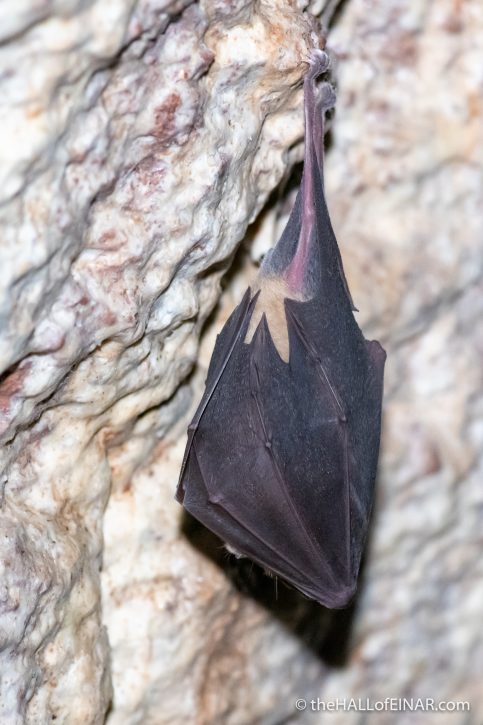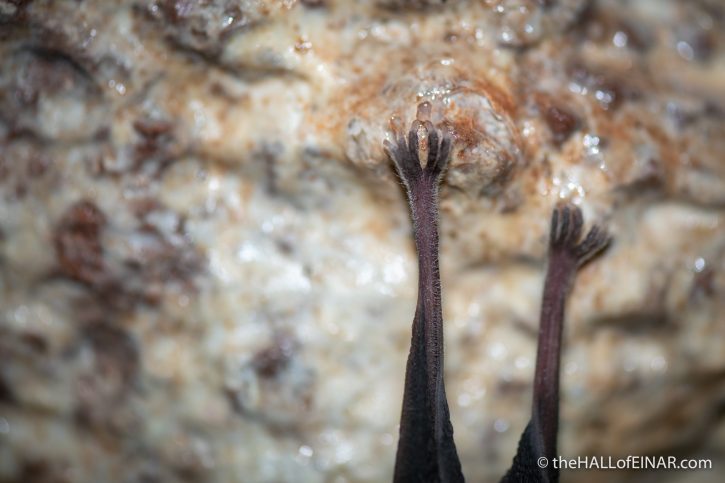Four species of bat in one cave
When I tell you that I’ve been invited to a bat cave, your reaction is likely to be, “How great!”, “How awful!”, “Have they got a license to do that?” or even “I can just see you as Alfred the butler!”
Luckily I’m being taken there by someone who knows their bats and has all the licenses needed. Our first find, near the entrance, is a Lesser Horseshoe Bat, Rhinolophus hipposideros. It’s so tiny, and hanging by delicate toes to the encrusted wall. I’m using a relatively dim LED light and take a handful of photos before retreating quickly. There’s another one further down in the cave:
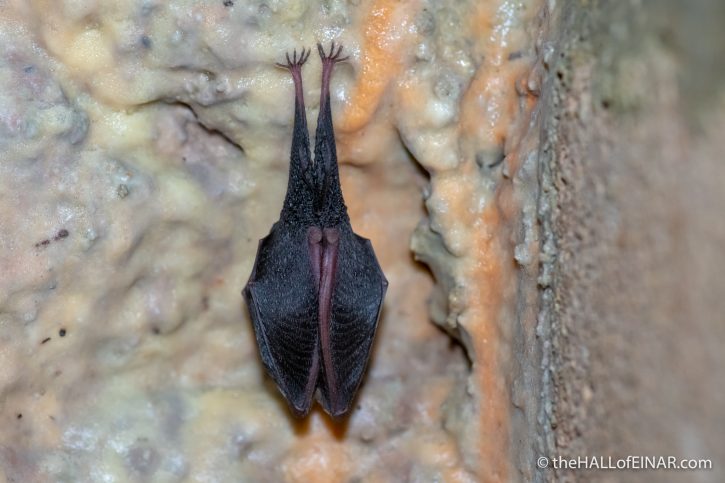
In Britain, they’re only found in South West England and Wales. Their populations in the north midlands and northern England have all died out in the last 50 years. That’s really tragic.
Further in, there’s a Greater Horseshoe Bat, Rhinolophus ferrumequinum. This is a bulkier bat with a similar hanging style. If I could see its face it would have a distinctive horse-shoe crescent of skin.
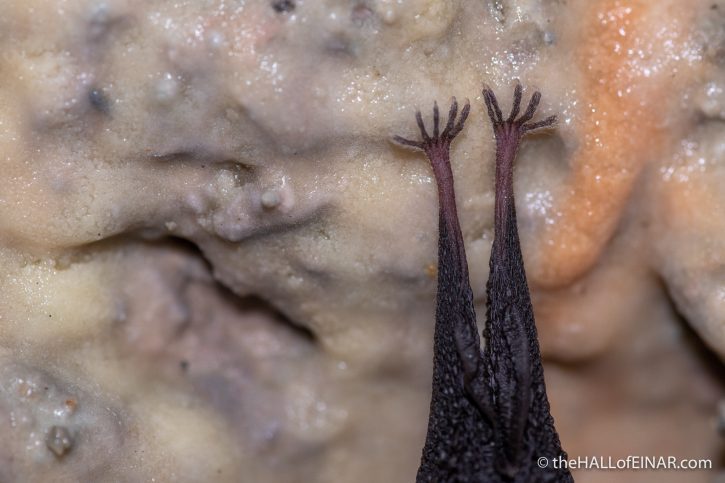
It’s got its face wrapped in the cloak of its arms. In Britain, Greater Horseshoe Bats are only found in South West England and south Wales. That’s probably because they need to feed in the winter and benefit from the milder weather. My research tells me their populations are localised and rare.
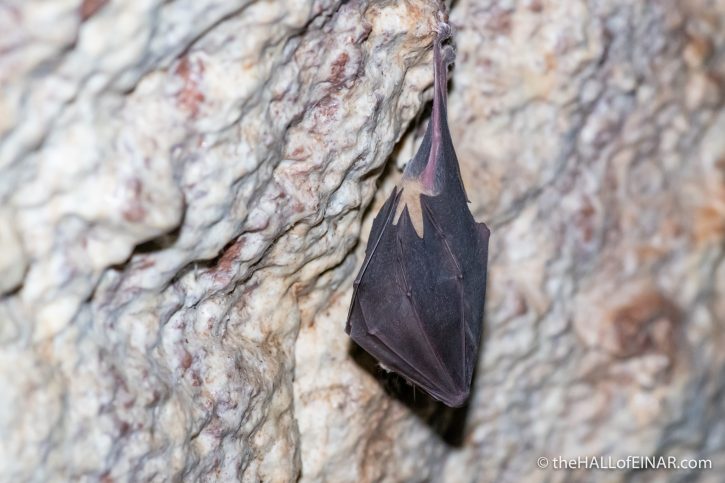
Looking behind a bat brick there’s a Brown Long-Eared Bat, Plecotus auritus. (There’s such a thing as a bat brick?) I can see this one’s face. I’m sure its mother loved it. Brown Long-Eared Bats are less immediately threatened, but still suffer from the pesticides used by farmers and the timber treatment used by building owners.
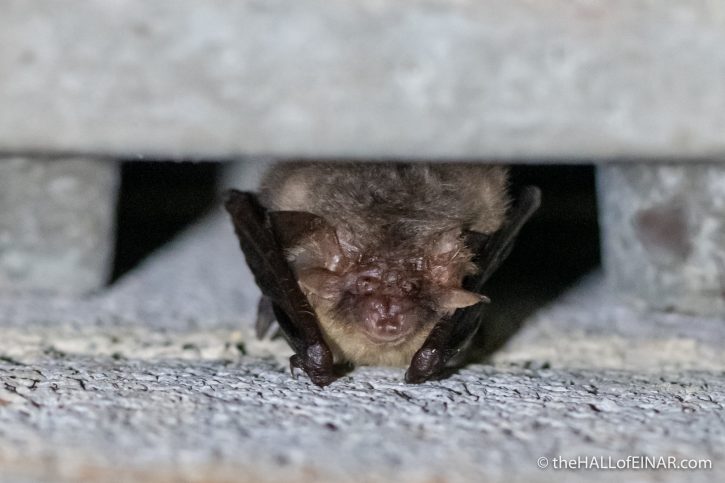
Finally there’s a Natterer’s Bat, Myotis nattereri. It has a beautiful pale belly.
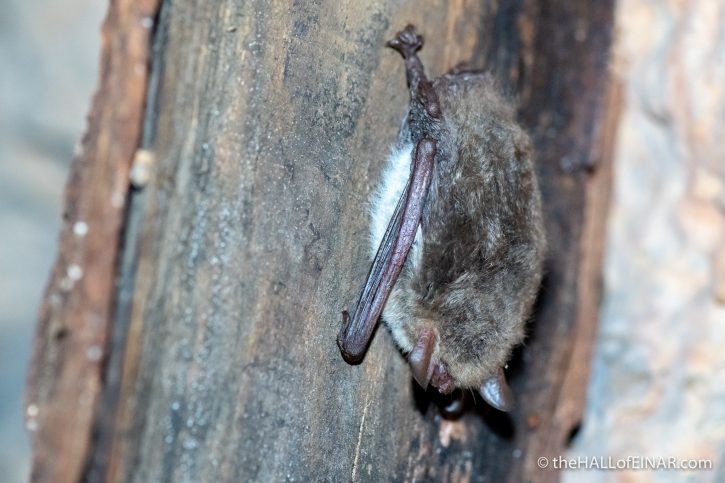
What a treat this morning has been. There’s good recent scientific research which shows that the more people have contact with the natural world, the more they care about it. I’m now interested in getting as many bat roosts as possible protected.
What contact with the natural world has made you feel protective towards it?
